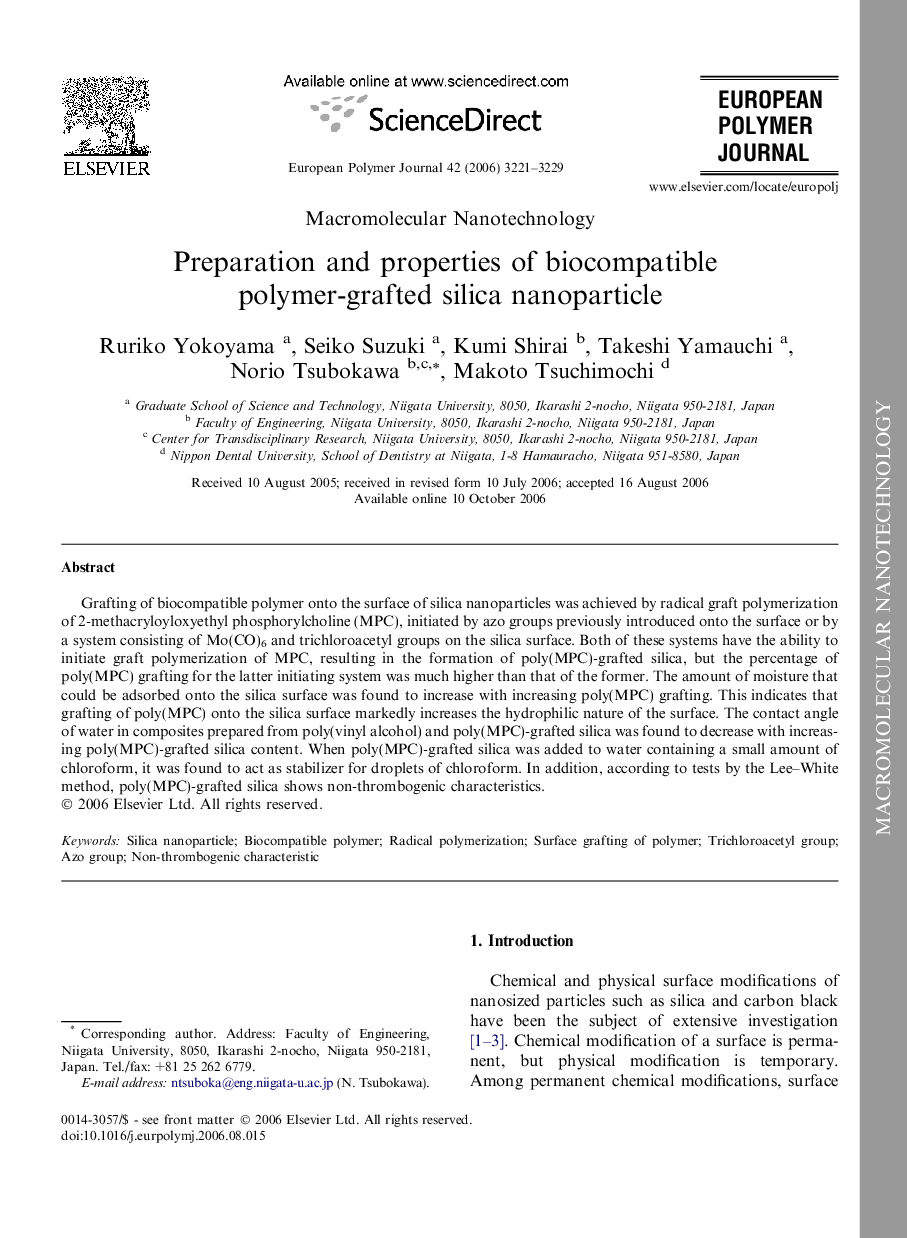| Article ID | Journal | Published Year | Pages | File Type |
|---|---|---|---|---|
| 1396863 | European Polymer Journal | 2006 | 9 Pages |
Grafting of biocompatible polymer onto the surface of silica nanoparticles was achieved by radical graft polymerization of 2-methacryloyloxyethyl phosphorylcholine (MPC), initiated by azo groups previously introduced onto the surface or by a system consisting of Mo(CO)6 and trichloroacetyl groups on the silica surface. Both of these systems have the ability to initiate graft polymerization of MPC, resulting in the formation of poly(MPC)-grafted silica, but the percentage of poly(MPC) grafting for the latter initiating system was much higher than that of the former. The amount of moisture that could be adsorbed onto the silica surface was found to increase with increasing poly(MPC) grafting. This indicates that grafting of poly(MPC) onto the silica surface markedly increases the hydrophilic nature of the surface. The contact angle of water in composites prepared from poly(vinyl alcohol) and poly(MPC)-grafted silica was found to decrease with increasing poly(MPC)-grafted silica content. When poly(MPC)-grafted silica was added to water containing a small amount of chloroform, it was found to act as stabilizer for droplets of chloroform. In addition, according to tests by the Lee–White method, poly(MPC)-grafted silica shows non-thrombogenic characteristics.
